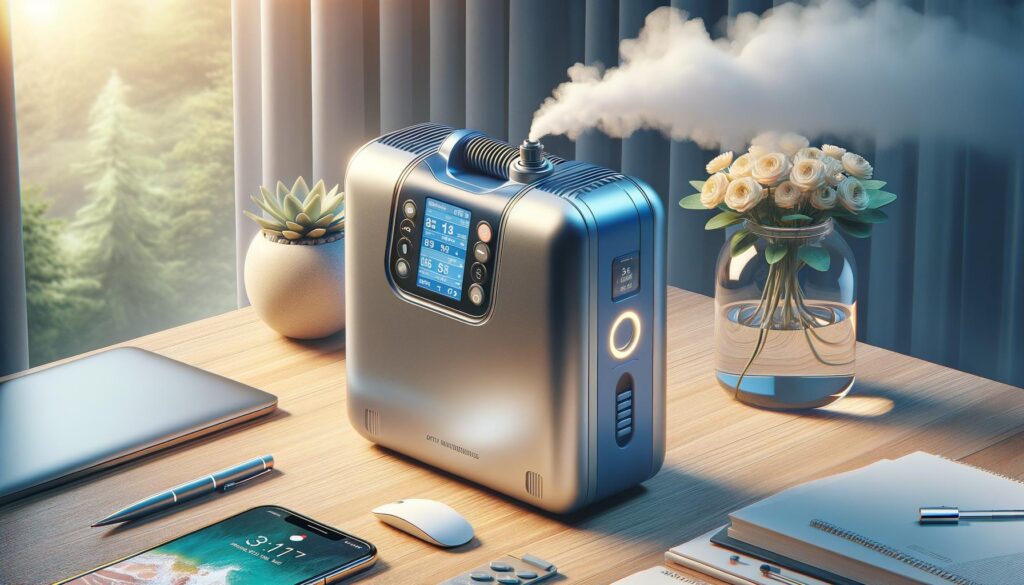Exploring Portable Oxygen Concentrators: A Breath of Fresh Air

The Basics of Portable Oxygen Concentrators
Portable oxygen concentrators are innovative healthcare devices designed to provide supplemental oxygen to individuals with breathing difficulties. Unlike stationary oxygen systems, these portable oxygen machines are lightweight and compact, making them easier to carry during travel and outdoor activities. They function by inhaling air from the surroundings, filtering it, and delivering concentrated oxygen to the user through a nasal cannula or mask. This technology ensures a steady supply of oxygen, vital for individuals with conditions such as chronic obstructive pulmonary disease (COPD) and emphysema.
Portable oxygen devices are distinct from traditional oxygen tanks, as they do not store oxygen internally; instead, they produce it on demand. This reduces the risk of running out of oxygen during outings and eliminates the need for regular tank refills. Their compact size allows users to maintain mobility and independence, proving essential for enhancing quality of life.
Benefits of Using Portable Oxygen Machines
One of the primary advantages of portable oxygen concentrators is their convenience and flexibility. These devices allow users to participate in various activities that might have been challenging without access to a constant supply of oxygen. With technological advances, many concentrators come equipped with easy-to-use interfaces, battery backups, and rechargeable options, which further enhance their utility. Here are a few benefits:
- Enhanced Mobility: Users can engage in travel, work, and leisure activities without being tethered to a fixed oxygen source.
- Peace of Mind: The continuous oxygen supply reduces anxiety associated with oxygen depletion during activities.
- Cost-Effective: Over time, portable units can be more economical compared to repeated refills of traditional oxygen tanks.
As healthcare providers increasingly recommend these devices, patients often experience improved satisfaction and compliance with their oxygen therapy regimes.
Choosing the Right Portable Oxygen Device
When selecting a portable oxygen concentrator, several considerations come into play to ensure it meets specific needs. Firstly, the oxygen output capacity should align with the user’s required oxygen dosage, usually indicated by a healthcare professional. Battery life is another crucial factor, especially for those who anticipate long durations away from electrical outlets. Devices with multiple power options, such as AC, DC, and rechargeable batteries, can be particularly advantageous.
Additionally, weight and size matter significantly, as smaller, lighter models contribute to increased portability. The choice between pulse flow and continuous flow oxygen settings is also vital, contingent on the user’s condition and preferences. Consulting with healthcare providers for personalized recommendations can be helpful to navigate the specifications of different portable oxygen devices.
Maintenance and Care for Longevity
To ensure the efficient functioning of portable oxygen machines, regular maintenance is key. Keeping the device clean, including the filters and external housing, prevents dust and debris from compromising its performance. Users should adhere to the manufacturer’s guidelines on filter replacement schedules and device cleaning. Many units have user-friendly filter designs for easy maintenance.
Moreover, battery care significantly affects functionality and battery life. Users are advised to follow charging instructions carefully and store batteries properly when not in use. Troubleshooting guidance and customer support services provided by manufacturers are also vital resources for users to address concerns promptly.
A Glimpse into the Future of Oxygen Therapy
As technology advances, the future of portable oxygen concentrators looks promising. There are ongoing developments focusing on enhancing battery longevity, reducing device size further, and improving oxygen delivery systems to mimic natural breathing better. Additionally, integrating these devices with health monitoring technologies could facilitate real-time data transmission and feedback to healthcare professionals, allowing for more personalized care plans.
Innovations aimed at improving user comfort, such as noise reduction and ergonomic designs, are also on the horizon. With an aging population and increasing prevalence of respiratory illnesses, the demand for efficient and user-friendly portable oxygen devices is likely to grow, paving the way for new advancements and increased accessibility.
Conclusion
Portable oxygen concentrators have played a transformative role in improving the lives of many who rely on supplemental oxygen therapy. By providing mobility, convenience, and continuous oxygen supply, these devices enable individuals to maintain a fulfilling lifestyle. As the technology continues to advance, it holds the promise of even greater accessibility and innovation, ensuring that users can breathe easy and enjoy a higher quality of life. Whether embarking on a journey or simply wanting more independence, portable oxygen devices deliver a promising solution for those in need.
